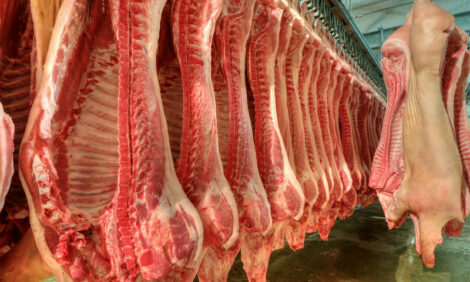



Market Preview: Sow Count Hits New Low
US - Weekly US Market Preview provided by Steve R. Meyer, Ph.D., Paragon Economics, Inc.It is amazing how quickly things change. Just a few months ago we were all wondering how low the breeding herd would go and how many producers would leave the production sector. That concern has now shifted to: “How quickly will producers respond to the promise of profits?”
I suppose we just need something to worry about – or at least we economists do. Figure 1 shows the two trends that I think are most important at present. The US breeding herd has continued to set records for the lowest modern-day total. I have checked USDA data back to 1900, and there has not been a smaller breeding herd on record, although the further back you go, the records are pretty spotty. Sometime back in the 1800s, or at least at some point since DeSoto walked off the boat in Florida with the first few pigs from Europe, there were fewer breeding hogs on this plot of land we now call the United States. It is safe to say, however, that no one alive remembers that day.

The US breeding herd has fallen from 6.233 million head on 1 December 2007 to 5.76 million head on 1 March 2010. That decline of 473,000 breeding animals amounts to 7.6 per cent. The question is whether the herd will continue to decline. The answer depends on what kind of decline you are considering – actual numbers or year-on-year?
In actual numbers, the breeding herd may stop falling pretty quickly. Our last “loss” cycle in 2003-2004 ended with a profitable February 2005, according to Iowa State University’s estimated costs and returns. The breeding herd bottomed in March 2005, then began growing very slowly with the June 2005 report. That June 2005 inventory was also larger than the June 2004 inventory, so year-on-year growth began immediately, primarily because the 2003-2004 liquidation was very small.
Entering New Territory
This one is different – down 7.6 per cent since December 2007 and down 3.9 per cent vs. March 2009. It will take a while to overcome those cuts even if numbers start to grow quickly. From the 1 March level, breeding animal numbers will have to grow by 208,000 to make the June 2010 herd larger than one year earlier. It will have to grow by 115,000 and 90,000 head to make the September and December inventories, respectively, larger than those of 2009. In my opinion, there is no way June will show year-over-year growth and September and December are doubtful.
Yes, there is slack space on many farms, but most of those farms are seeing output levels equal to or even larger than what they saw when they were cramming sows into every nook and cranny. Why would they want to add sows when output will probably not grow?
And, yes, there are empty sow farms, but a good number of them will never come back into production. It is pretty shocking to me to think that 1,200-sow, farrow-to-wean or, especially, farrow-to-nursery farms are obsolete, but many tell me that is so. They simply do not fit the optimal flow patterns of today’s industry. A few empty 3,400- or 5,400-sow farms will come back into production, but there are reasons they are currently empty and some of those reasons (disease, hog density, design) may be hard to overcome.
Some knowledgeable observers tell me that perhaps a quarter of the 473,000 removed breeding animals may come back, but they will not do so quickly. Accumulated profits (a proxy for equity) are down 60-80 per cent and bankers’ memories, while they may not be very long, are certainly long enough to keep them from running willy-nilly back into relatively easy credit.
I expect the breeding herd reductions to slow to a snail’s pace by summer and to end this fall. But year-on-year growth will not likely appear until March 2011, when we begin comparing to the low inventories of March 2010 and beyond.
None of this means that output will not begin to grow, however, and the other line in Figure 1 is key to that growth. Litter growth slowed to a measly (that is offered sarcastically) 1.4 per cent in December-February. Historical seasonal patterns tell us that litter sizes will grow in the March-May and June-August periods, but will that take us back to a 2 per cent or more year-on-year growth rate? Perhaps not, but I do not expect it to fall below 1 per cent either. Anything between 1 and 2 per cent still exceeds historical growth rates with the exception of 1994-1997 and 2004-2007.










